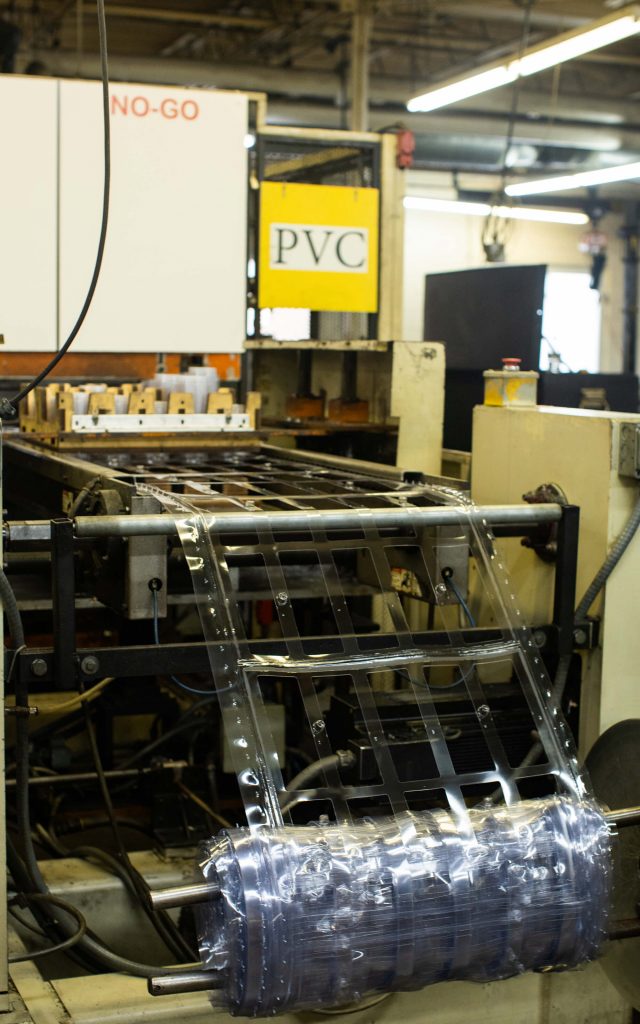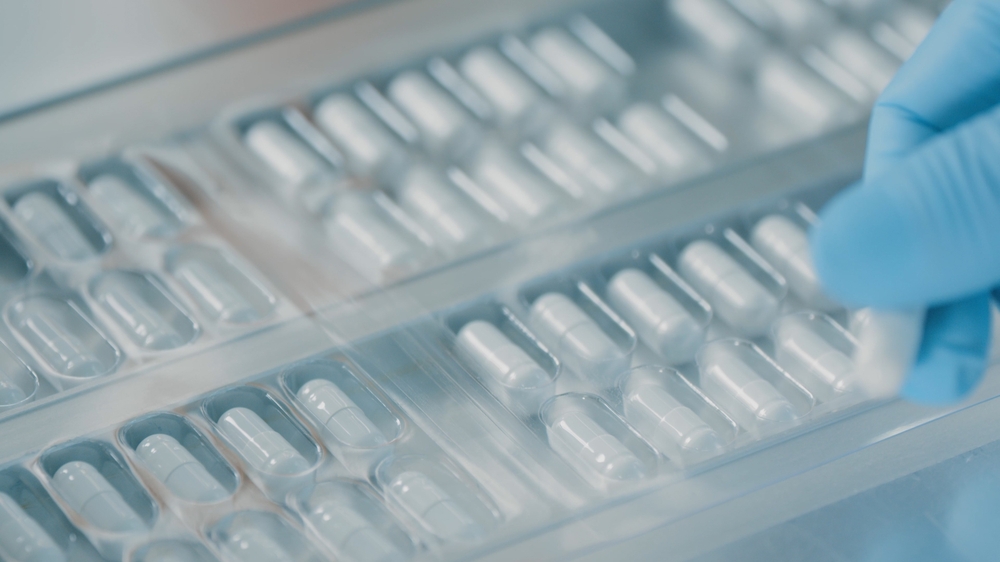Blister packaging is a common way to pack small items, from pharmaceuticals and cosmetics to electronics and toys. Blister packages are heat-sealed to ensure the product’s freshness, shelf life, and safety.
In today’s post, Complete Packaging Solutions explains how heat-sealing for blister packs works!
How are Blister Packs Sealed?
Blister packs are sealed with high heat and high pressure from a thermoforming machine. Though uncommon, some manufacturers even use ultrasound or UV light to seal the back card (a heat-seal-coated paper) to the plastic.
Related Post: What is Blister Packaging?
Basically, blister packaging machines heat a sheet of plastic and mold it to form a nested pocket, bubble, or “blister” where a product is placed. There are also various types of adhesives used for blister seals.
Blister Pack Heat Sealing Methods
Blister packaging machines have to preheat in order to shorten heat seal time and speed up the output.
Plate pressing type: Used for “dot sealing,” more pressure is required from the machine to fully seal the blister to the backing since the blister packaging is flatter.
Rolling type: Typically used for “line sealing,” the reticulate roller and heat seal roller are mutually parallel and set to a specific temperature and dwell pressure to heat seal PVC tape and aluminum foil.
Line sealing: It’s the most common heat-sealing method used for blister packaging.
The Process of Heat Sealing Blister Packs
To seal a variety of blister packs, the blister packaging machine has to be set to various custom settings, like the heat level, pressure, and dwell time.
Each step of the heat-sealing blister packaging process impacts the strength of the package — especially the settings during the final heat sealing.
- Unwinding: The plastic film (such as PVC, PET, or PVDC) is conveyed forward on the uncoiler machine
- Film-forming: After it’s heated, smooth blisters are formed on the softened plastic by suction vacuuming (negative pressure forming).
- Filing products: The physical product, be it an electronic, pharmaceutical, or food-related item, is fed into the plastic cavity.
- Heat-sealing: Either a rolling type or plate pressing type of heat seal is used to pressure bond the backing on top of the plastic molds, encasing the product.
- Trimming and printing: Any uneven parts of the blister are trimmed to be uniform, and information, like dates or lot numbers, is printed on the back.
The paperboard or aluminum backing is bought in one large piece and cut into specific sizes before thermoforming of the plastics begins.
Plastic sheets or film are fed into the thermoforming machine from the uncoiling machine.

The heat softens the plastic enough for it to be malleable for forming a specific shape. Once it reaches this state, it’s fed into a machine that molds cavities in the plastic.
It comes out of the machine and is cooled off. Finally, the plastic is bonded onto the paperboard card using a specific heat, pressure level, and knurl pattern to press the edges.
Blister Packaging Benefits
Plastic blister packages get a bad rap! Despite the benefits: sturdy; robust; durable; personalizable.
Frankly… it’s hard to open the heat-sealed plastic. It’s great for avoiding tampering but bad when your customers want to actually access the product.
And (of course) they’re plastic, not biodegradable.
However, in some cases, blister packs can be recycled and modified to meet FDA requirements for safe medication shipments.
Blistering Packaging Heat Seal Equipment Best Practices
Blister packaging equipment should be checked periodically to ensure no dirt or debris is interfering with its ability to correctly seal the product, minimizing moisture ingress from the sides of the seal.
Watch for dirty or worn-downed sealing die surfaces on machinery that can absorb heat, distort the knurl pattern and lend to an uneven seal that weakens and breaks quickly.
To avoid weak seals, have a good knurl. A knurl is basically a small metal object that creates ridge patterns on the thermoformed package seal edge. It is the metal mechanism by which the heat seal is completed between the plastic and cardboard, paper, or aluminum back.
Monitor the machine’s settings carefully. Too much pressure or line speed from the device, and you’ll end up with cracked lidding foil or an otherwise compromised seal.
Worst case scenario? Breaks in the plastic seal could be microscopic — that is, too small to notice. This is the result of poorly-done heat sealing, which negatively impacts a product’s shelf life, particularly dangerous for pharmaceutical items that ruin due to oxidation.
Types of Blister Packages
Not all blister packages are heat-sealed. Some are cold-formed by pressing an aluminum-based laminate film on the mold like a stamp.
Face Seal.
A blister card pack is created with an outer rim that is then heat-sealed using dedicated “nests”, activating the glue on the card, and securing the product to the card. A full-face seal is when the plastic covers more of the surface area on the card.
Trap Blister.
A thermoformed plastic container that is placed in between a single-folded or two-folded card, “trapping” the flanges (the edges) of the custom blister card.
Blister Card.
The plastic is not heat-sealed to the card. It has flanges that wrap around it and the card is slid or stapled into place.
Clamshell.
Similar to a trap blister, two sides fold together to create a closed container; however, this has a hinge connecting the two cards.
Lesser Known Facts on Blister Packs
- It’s sturdy against tampering or theft (hence why pharmaceutical companies use them)
- The packs are not always re-closable
- Heat sealing makes the package stronger and blemish-free
- Often inexpensive (small amounts of raw material are used)
- Highly customizable and personalized to fit a unique product
- The coated back card offers the perfect spot for promo ads
Does Complete Packaging Design Custom Blister Packs?
We offer the latest in-house tools for heat seal blister packaging to lower your costs and speed up production time.
Our staff can design custom blister seal packaging that suits your particular product to your specifications. Contact us today for more information.

